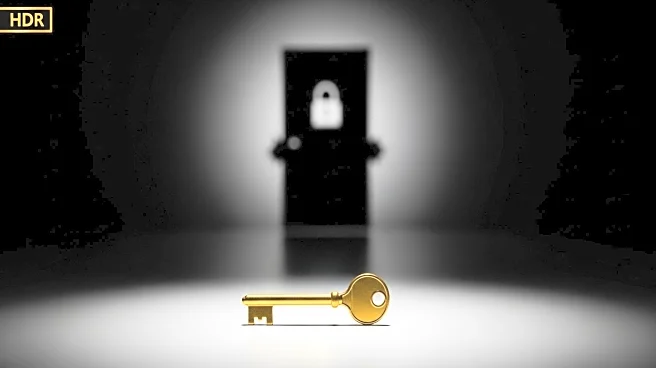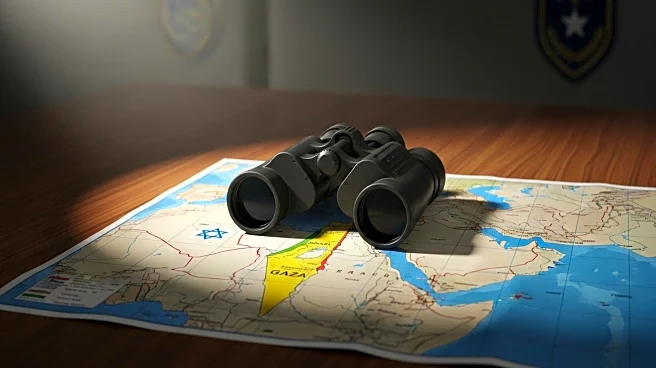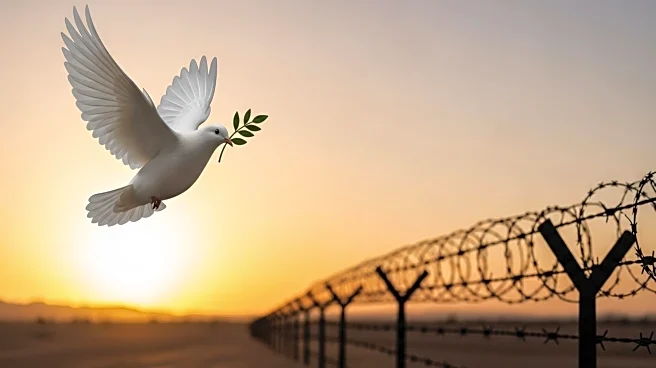What's Happening?
The Israeli government has approved a ceasefire agreement with Hamas, brokered by the United States, marking a significant development in the ongoing conflict in Gaza. The ceasefire officially came into effect, with Israeli Defense Forces (IDF) beginning to reposition troops in accordance with the agreement. The deal includes provisions for a hostage and prisoner exchange, as well as increased humanitarian aid. However, the agreement lacks detailed guarantees to prevent the resumption of hostilities, and key issues such as Hamas's disarmament and governance of the territory remain unresolved. Israeli Prime Minister Benjamin Netanyahu has expressed readiness to use force if Israel's demands are not met, indicating potential challenges in the implementation of the ceasefire.
Why It's Important?
The ceasefire agreement is a critical step towards ending the two-year-old conflict in Gaza, which has had severe humanitarian and geopolitical implications. The involvement of the United States in brokering the deal highlights the international dimension of the conflict and the importance of global cooperation in achieving peace. The agreement's success or failure could significantly impact regional stability, affecting neighboring countries and international relations. The unresolved issues, such as Hamas's disarmament, pose challenges to the long-term sustainability of the ceasefire, with potential consequences for civilian safety and political dynamics in the region.
What's Next?
The next steps involve monitoring the implementation of the ceasefire and ensuring compliance with the agreement's terms. The creation of an International Stabilisation Force is under consideration to oversee the process, although details are yet to be finalized. The potential for renewed hostilities remains if either side fails to adhere to the agreement, particularly concerning the disarmament of Hamas and the governance of Gaza. Continued diplomatic efforts and negotiations will be crucial in addressing these issues and preventing a return to conflict.
Beyond the Headlines
The ceasefire agreement raises ethical and legal questions regarding the use of force and the protection of civilian populations. The ambiguity in the agreement's text leaves room for interpretation, which could lead to disputes and challenges in its enforcement. The role of international mediators and the potential establishment of a monitoring mechanism highlight the complexities of achieving lasting peace in conflict zones. The situation underscores the need for comprehensive solutions that address underlying political and social issues to prevent future conflicts.











